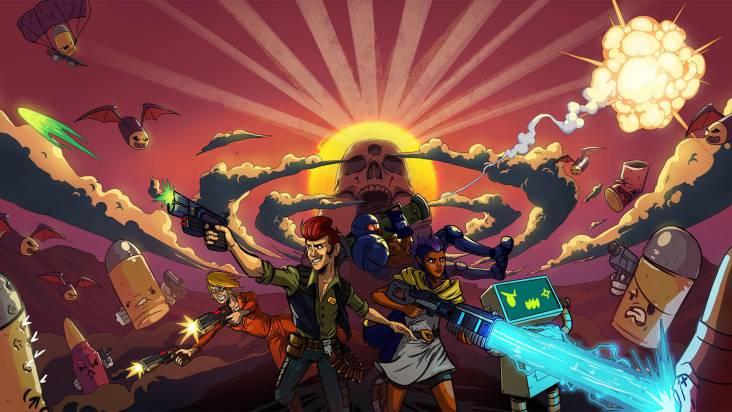

Without the permanence of guns in Exit, the strategy aspect of the game immediately loses a significant portion of its depth.
Enter the gungeon console comparison how to#
Dying in Enter felt like I was learning multiple lessons, like how to improve at the combat, or what I needed to focus on buying from shops in order to improve my odds at surviving and fit my playstyle. That may be what makes Exit feel less engaging after a while than Enter. While RNG is an important element for roguelikes, a sense of progression is arguably equally important, and Exit has unfortunately missed the latter. Buying a gun is only useful for however long its current amount of ammo lasts and adding it to a pool of RNG guns that you can potentially pull. Guns in Exit, conversely, only stick around as long as they have ammo. Buying guns in Enter meant that you had achieved something on your run it was a tangible upgrade. This puts a huge dent in the sense of progression that Enter had. Instead, each time you run out of ammo for a gun, you’re randomly assigned a new one. Guns aren’t acquired and switched out by the player. However, it’s here where Exit the Gungeon makes one of its most controversial decisions, likely in order to accommodate its original release on touchscreen devices. After all, it was a combination of both interesting guns and lots of enemies to use them on that made the combat in Enter as fun as it was. Perhaps that’s where the guns come into play. Being confined to an elevator means that the best the game can do to mix things up is randomize which enemies spawn in, and the baddies on display here simply don’t have enough variety or depth to be able to keep things enjoyable by themselves. This means that the combat has to carry the entire experience on its own. The simple fact that you were venturing into an unknown maze every time, not sure how things would look or how waves of enemies would be organized, made every return to Enter inherently interesting.Įxit obviously lacks this element, being stuck on an elevator for the entirety of the action. But the randomized layout of the rooms in Enter, even if the actual exploration wasn’t particularly deep, lent the game a high degree of replayability. In theory, one might view this as a potential improvement the exploration in Gungeon certainly wasn’t the focus of the game, and perhaps there’s an argument to be made for not spending development time on something if it isn’t going to be particularly deep. As you might imagine, this kicks most of the exploration themes present in the first game out the window, and instead the moment to moment gameplay of Exit focuses entirely on the action. After the events of Enter the Gungeon, the Gungeon is now crumbling and the player, trapped at the center, must escape by riding an elevator to the surface in order to escape. But does it handle well, and is a former iOS game worth your money?Įxit the Gungeon retains the roguelike and bullet hell qualities of its predecessor, but mixes things up by changing the gameplay style from a top down viewpoint to a more traditional 2D side scrolling perspective. Now the game has moved over to standard consoles and PCs.
Enter the gungeon console comparison series#
Instead.the next game in the series was a spin-off for iOS, designed to be played without a controller or keyboard/mouse altogether. After the immense success of 2016's Enter the Gungeon, one would expect the next game to take the core concepts and build on them while expanding on the content.

By Paul Broussard, posted on 04 April 2020 / 2,909 Viewsĭevolver Digital has certainly never been one to embrace conventionality.


 0 kommentar(er)
0 kommentar(er)
